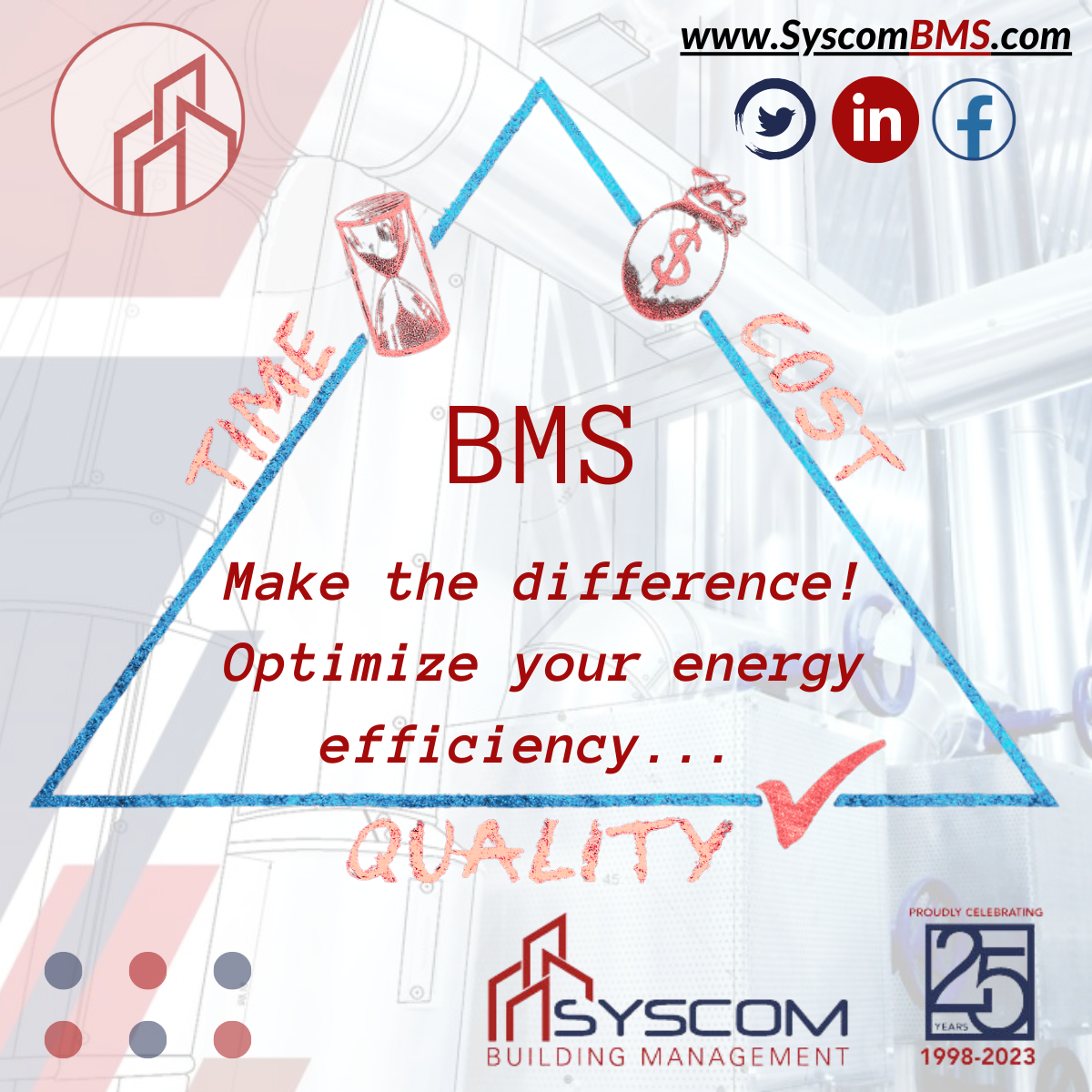
Stay Cool: How Outside Air Compensation Can Improve Indoor Comfort during Summertime
As the scorching heat of summer arrives, many of us seek refuge in the comfort of air-conditioned spaces. However, sometimes even the coolest of indoor environments can leave us feeling less than satisfied. This is where outside air compensation comes into play, offering a solution to enhance indoor comfort during the hottest months of the year. In this blog post, we will delve into the concept of outside air compensation, its benefits, and how it can be efficiently implemented to create a more enjoyable and refreshing indoor environment. So, let’s dive in and discover how staying cool can be made easier with this innovative approach!
Benefits of Outside Air Compensation in Building Management Systems

The integration of outside air compensation into building management systems (BMS) plays a vital role in reducing energy consumption and optimizing comfort levels within buildings. By actively monitoring outdoor temperatures, the BMS control system can effectively adjust the amount of air entering the building, ensuring a balanced and efficient airflow. This technology proves to be an invaluable asset as it minimizes the need for mechanical cooling or heating by utilizing the natural temperature conditions outside. Ultimately, this not only leads to significant energy savings but also enhances occupant satisfaction by maintaining optimal indoor climate conditions. With its ability to intelligently manage the air exchange process, the BMS control system effectively contributes to a sustainable and comfortable environment within buildings.
Building management system software plays a crucial role in efficiently maintaining comfort levels within a building while avoiding unnecessary strain on the HVAC system. By carefully monitoring outdoor temperature changes and adjusting the amount of outside air entering the building accordingly, these systems can optimize energy usage and ensure a comfortable indoor environment for occupants. The software enables the automatic control of HVAC systems, allowing for dynamic adjustments based on real-time weather conditions. This intelligent management system ensures that the building remains at an ideal temperature without overworking the HVAC system, thereby reducing energy costs and promoting sustainability. Embracing building management system software empowers facility managers to make informed decisions and implement effective strategies for optimal energy efficiency and occupant comfort.
Thus, integrating a Building Management System (BMS) into the management of buildings proves to be an effective solution in optimizing energy consumption. By utilizing various sensors and controls, the BMS system is capable of accurately monitoring and regulating the building’s heating, ventilation, and air conditioning (HVAC) systems based on real-time data. This intelligent approach ensures that energy is only utilized when necessary, preventing unnecessary usage and reducing overall energy bills. Furthermore, with the inclusion of outside air compensation, the BMS system further minimizes the need for additional energy to heat or cool air, resulting in significant cost savings. In conclusion, the implementation of a BMS system not only enhances the efficiency of building management but also translates into substantial financial benefits by reducing energy consumption and subsequent utility costs.
Advantages of Improved Indoor Comfort During Hot Weather
Building Management Systems (BMS) play a significant role in enhancing indoor comfort, particularly during hot weather conditions. By utilizing advanced building management system software, owners and operators gain the ability to not only improve overall efficiency but also optimize energy costs. These systems offer a comprehensive solution that enables efficient control and monitoring of various building components such as lighting, ventilation, and air conditioning. Through the intelligent integration and coordination of these elements, BMS ensures that occupants experience a comfortable and pleasant environment. Additionally, it allows for proactive measures to be taken in response to rising temperatures, enabling real-time adjustments to be made within the building’s systems. As a result, building management systems contribute to creating an optimal indoor climate that aligns with both comfort and economic considerations while demonstrating a commitment to energy conservation.

Besides regulating temperatures, humidity, ventilation, and air flow, a building management system (BMS) can offer a range of benefits when used in conjunction with building management system software. The integration of this software allows for data collection, analysis, and optimization of building systems, resulting in improved efficiency and reduced maintenance costs. With the ability to monitor and control various systems within a building, such as lighting and security, a BMS can provide a comprehensive solution for facility management. Additionally, the use of building management system software enables real-time tracking of energy consumption, allowing for proactive measures to be taken to reduce energy costs and contribute to a sustainable future. By utilizing a BMS and its accompanying software, building owners can create comfortable and efficient spaces while also benefiting from increased occupant satisfaction and reduced operational expenses.
Implementing Outside Air Compensation Strategies
Implementing Outside Air Compensation Strategies in a Building Management System (BMS) is of utmost importance in optimizing energy efficiency and maintaining ideal occupant comfort levels. A BMS, also known as a building automation system, serves as a central hub for controlling and monitoring a wide range of building systems. By integrating outside air compensation strategies into the BMS, building operators can effectively address the challenges associated with maintaining indoor air quality while minimizing energy wastage.

Outside air compensation refers to the process of adjusting the amount of outside air brought into a building based on real-time conditions and occupant demand. This strategy is crucial in ensuring a healthy and comfortable indoor environment, as well as promoting energy savings. By utilizing the capabilities of a BMS, building operators can continuously monitor factors such as temperature, humidity, and occupancy levels. This data can be analyzed and used to determine the appropriate amount of outside air required for ventilation.
Integrating outside air compensation strategies into a BMS facilitates precise control and optimization of HVAC systems. By dynamically adjusting the volume of outside air intake, the BMS can prevent unnecessary energy usage by not over-conditioning the incoming air. This targeted approach enables energy expenditure reduction while maintaining optimal occupant comfort levels.
Furthermore, implementing outside air compensation strategies within a BMS supports adherence to local building codes and regulations related to indoor air quality. By continuously monitoring and adjusting ventilation rates, the system ensures compliance with guidelines that promote occupant health and safety.
In conclusion, incorporating outside air compensation strategies into a Building management systems (BMS) play a crucial role in maximizing energy savings within a facility. With the help of advanced building management system software, BMS can be configured to consider external weather conditions and subsequently adjust ventilation rates accordingly. This intelligent feature allows for reductions in outside air intake when weather conditions are milder. By taking into account the external environment, BMS optimizes energy consumption by efficiently regulating the ventilation system. This proactive approach ensures that buildings are not expending unnecessary energy and resources. Through the utilization of building management system software, facilities can achieve significant energy savings while maintaining a comfortable indoor environment for occupants. Such smart and efficient management of ventilation rates reflects the professional and forward-thinking approach embraced by building management systems.
Similarly, building management system software plays a crucial role in optimizing the use of reheat coils, thereby contributing to enhanced energy efficiency and cost savings. By continuously monitoring and adjusting the coils, the BMS ensures that they are modulated or turned off when not required, thus minimizing energy consumption without compromising the indoor air quality. This intelligent utilization of reheat coils by the BMS not only contributes to the sustainability goals of the building but also aligns with the organization’s financial objectives. With its ability to maximize energy efficiency while maintaining a comfortable indoor environment, building management system software emerges as an indispensable tool in the modern era of smart buildings.
The Impact of Temperature Differentials on Occupant Comfort
Temperature differentials between rooms in a building can be highly disruptive, causing significant discomfort for occupants and resulting in a decline in both productivity and satisfaction levels. To effectively address this issue, the implementation of Building Management Systems (BMS) is essential. BMS software plays a crucial role in regulating and maintaining the ideal temperature throughout a building, ensuring optimal comfort for occupants. By integrating various sensors and control mechanisms, the BMS software actively monitors and manages temperature differentials, providing real-time adjustments as required. This proactive approach not only enhances occupant comfort but also increases overall productivity and satisfaction levels. With its professional and efficient manner of operation, BMS software effectively eliminates temperature discrepancies, creating a conducive environment that promotes focus, efficiency, and contentment among building occupants.

In the context of building management systems, it is crucial to prioritize occupant comfort, thereby necessitating the continuous management and monitoring of temperature. This objective can be achieved through the utilization of sophisticated building management system software, which possesses the capability to track and adjust temperatures in accordance with external factors such as weather conditions. By employing these advanced technological solutions, building managers can optimize temperature control, ensuring a pleasant environment for occupants while also enhancing energy efficiency. The integration of such intelligent building management systems enables real-time analysis and dynamic adjustments, ultimately leading to improved comfort levels and cost savings. Moreover, the ability to monitor and manage temperature seamlessly contributes to the overall effectiveness and efficiency of building operations. Thus, with the implementation of cutting-edge building management system software, stakeholders can achieve the dual objectives of occupant satisfaction and energy conservation.
Additionally, the implementation of smart building management systems, equipped with advanced BMS controls, offers numerous benefits beyond temperature regulation and occupant comfort. These systems have the ability to optimize energy consumption by efficiently controlling lighting, heating, and ventilation, resulting in reduced utility costs and environmental impact. Moreover, BMS controls provide real-time data and analytics on building performance, enabling facility managers to proactively identify and address potential issues before they become major problems. In this way, smart building management systems not only enhance occupant comfort but also contribute to sustainable and cost-effective building operations.
How to Utilize Outside Air Compensation to Optimize Indoor Climate Control
A crucial aspect of building management systems (BMS) is optimizing indoor climate control, and one effective strategy to achieve this is by utilizing outside air compensation. By integrating outside air compensation into the BMS, the system can efficiently regulate the air temperature entering the building, ensuring optimal comfort and energy efficiency. Outside air compensation involves measuring the outdoor temperature and using this information to adjust the indoor temperature setpoints accordingly. This approach allows for more precise control over the HVAC system, enabling it to respond to external conditions effectively. Ultimately, this sophisticated integration of the BMS with outside air compensation helps businesses and organizations maintain a pleasant indoor environment while also promoting energy savings.

Building management system software plays a crucial role in optimizing the efficiency and sustainability of modern buildings. One important feature that enhances climate control while minimizing energy waste is the use of outside air compensation. This innovative mechanism allows for adjusting the amount of outside air entering the building based on changes in temperature. By integrating this functionality into building management system software, facility managers can achieve more precise and efficient control over climate conditions. This not only ensures a comfortable environment for occupants but also contributes to significant energy savings. With the ability to adapt the intake of outside air to the actual temperature, the building management system software enables optimal utilization of resources and minimizes unnecessary energy consumption. By prioritizing efficiency and sustainability, this technology represents a significant step towards enhancing building performance and reducing environmental impact.
Again, the incorporation of outside air compensation into building management system software is crucial for reducing energy costs and enhancing occupant comfort. By continuously monitoring and adjusting the flow of outside air into a building, the system optimizes energy usage and minimizes waste. The software intelligently regulates the amount of fresh air brought in based on indoor and outdoor conditions, ensuring a healthy and comfortable environment for building occupants while also preventing unnecessary energy consumption. In this way, building management system software acts as a powerful tool in promoting sustainability and efficiency in modern buildings. Considering the numerous benefits it offers, outside air compensation has become an essential component of any comprehensive building management system.
Assessing the Overall Benefits of Outside Air Compensation
When considering the application of Outside Air Compensation within building management systems, evaluating its overall benefits becomes crucial. This assessment entails a comprehensive understanding of various factors, such as energy efficiency, occupant comfort, and air quality. By implementing this feature in building management system software, energy consumption can be optimized, leading to significant cost savings and environmental benefits. Additionally, occupants experience improved comfort levels as the system optimizes outside air intake based on real-time conditions, thereby maintaining an ideal indoor environment. Furthermore, the integration of Outside Air Compensation into the building management system software ensures the continuous monitoring and control of air quality, safeguarding occupant health and well-being. Overall, the incorporation of this advanced feature within building management systems offers a holistic approach to promoting efficiency, comfort, and indoor air quality.

All in all, when assessing Outside Air Compensation, it is crucial to consider its impact on the building’s energy efficiency and the overall management of the facility. By utilizing building management system software, the benefits of improved air tightness and increased ventilation rates can be maximized. This software enables the monitoring and control of various building systems, including HVAC usage, ensuring optimal performance and reduced energy consumption. With the integration of Outside Air Compensation into a comprehensive building management system, facility managers can effectively optimize energy efficiency while maintaining a comfortable and healthy indoor environment. Therefore, it is essential for building owners and operators to invest in advanced building management system software that incorporates outside air compensation to achieve sustainable and efficient building operations.
Conclusion
In conclusion, outside air compensation presents itself as a promising solution to address the limitations of traditional cooling systems and enhance indoor comfort during the summertime. By integrating fresh outdoor air with conditioned indoor air, this innovative approach offers a refreshing and enjoyable environment that can truly beat the heat. With its numerous benefits and efficient implementation methods, outside air compensation proves to be a valuable tool for creating cool and comfortable spaces that cater to our need for respite from the scorching summer temperatures. So, whether you are at home, in the office, or anywhere in between, consider harnessing the power of outside air compensation to stay cool and refreshed all summer long.




